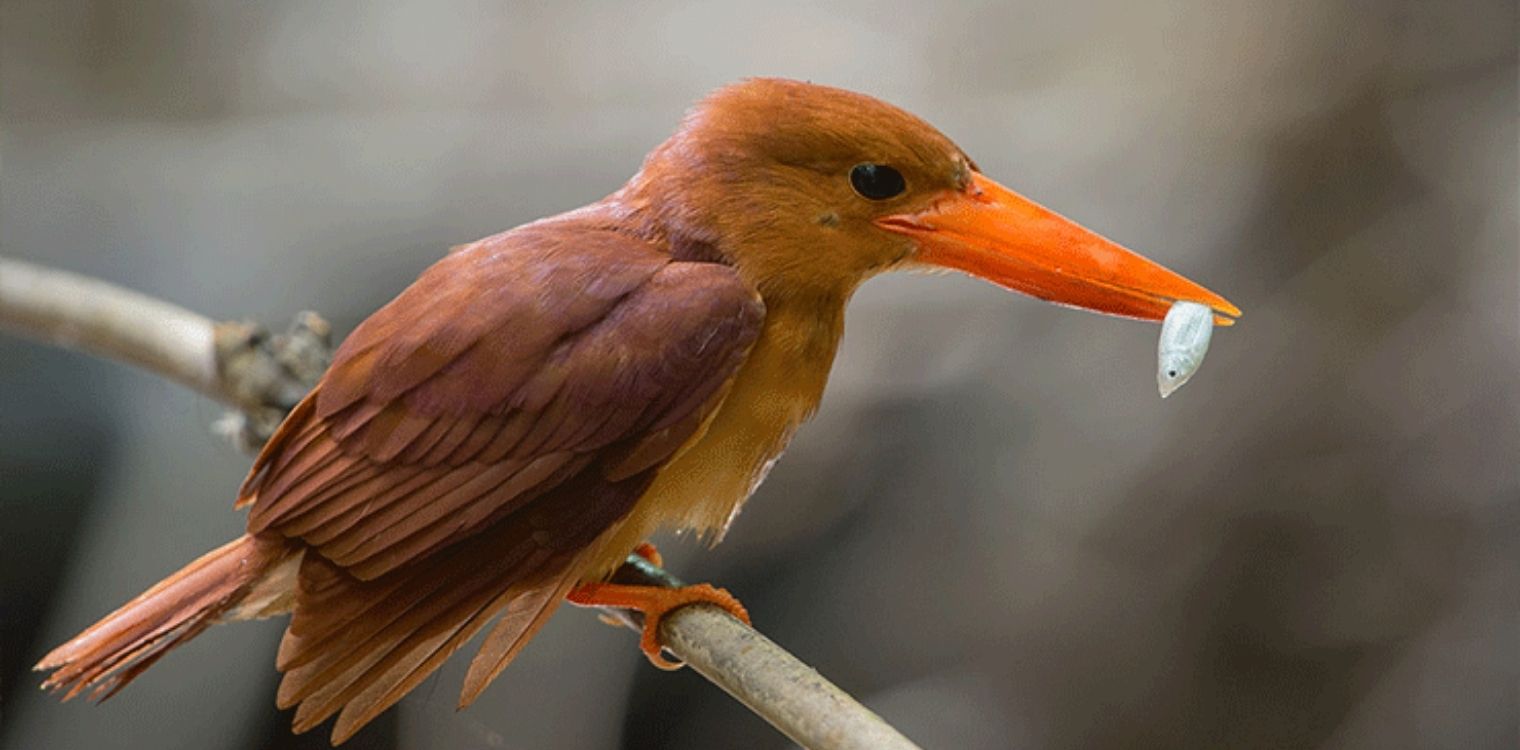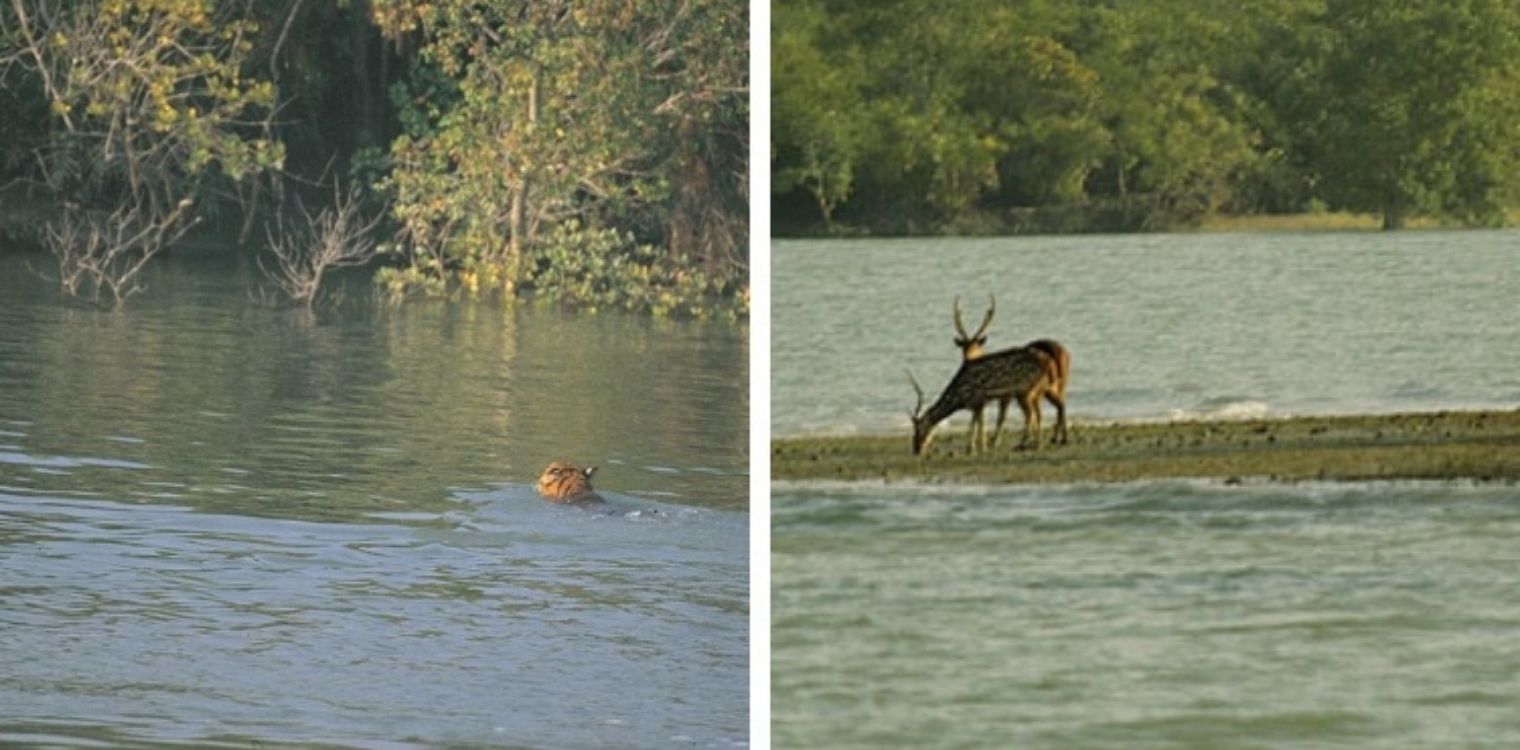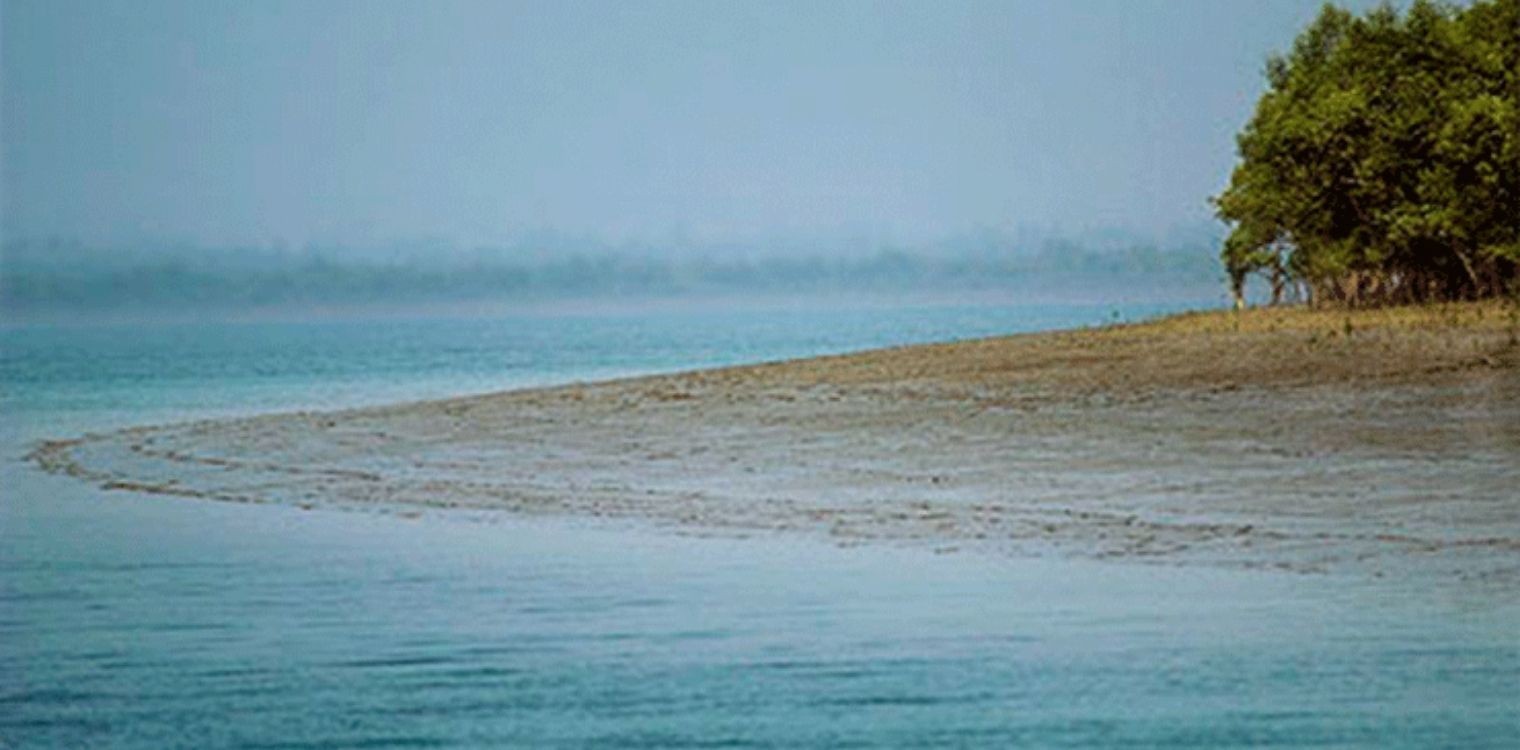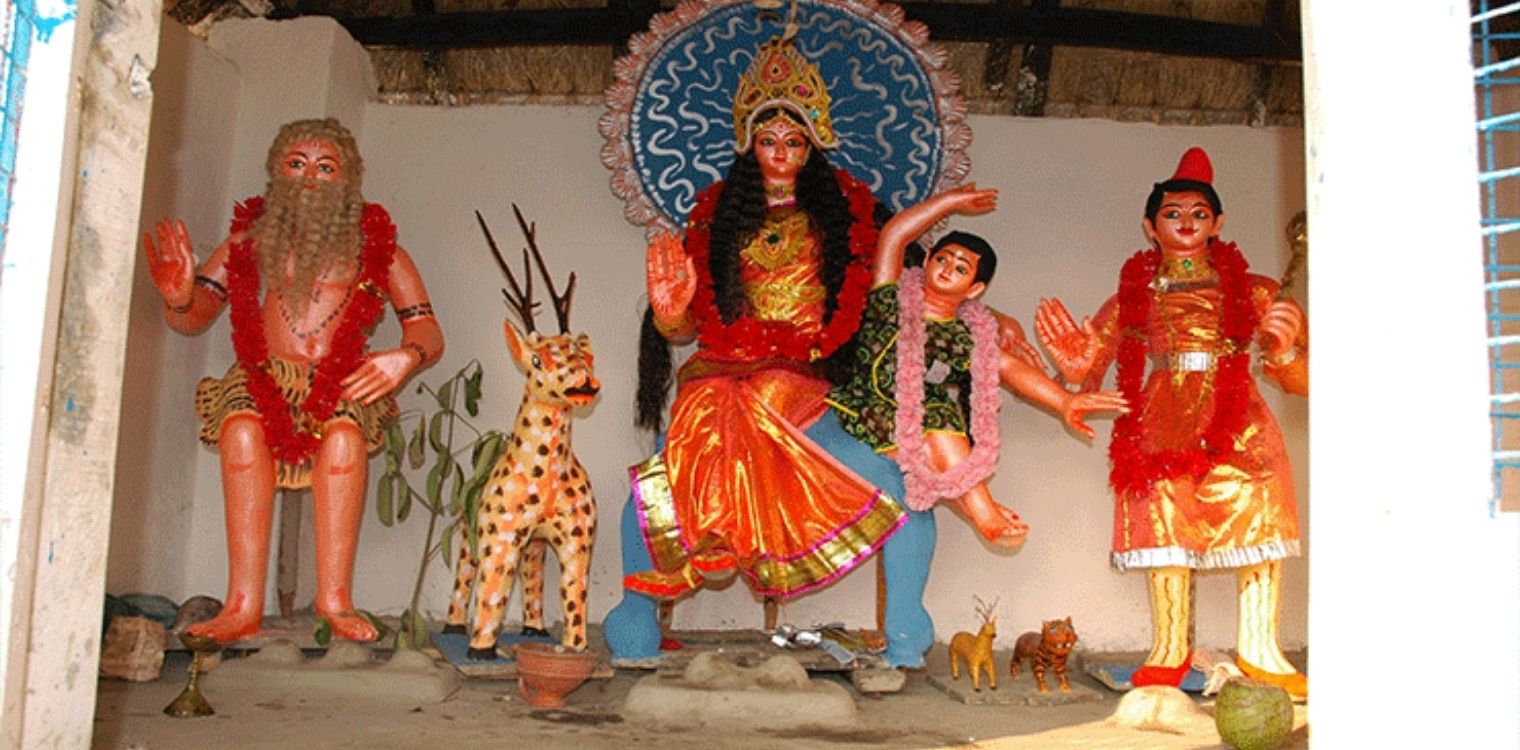The name “Sundar Ban” translates to mean “A Beautiful Forest.” And it is indeed one of the most beautiful on the Earth. A UNESCO World Heritage Site, the Sunderbans is a vast area covering 4264 square km in India alone. do you know that the Indian Sunderbans forms the largest Tiger Reserve and National Park in India?
A paradise for birdwatchers, this bird-watching tour includes rarities such as the Masked Finfoot, Mangrove Pitta, and the Mangrove Whistler.

So when the guests arrive in Kolkata on day one, I extend them a warm welcome right at the airport, at times and then take them by a comfortable vehicle to the jetty at Godhkali. The road goes up to Godkhali (around two and a half hours drive from Kolkata), which is also known as the gateway to the Sundarbans.
This drive takes the avid wildlife lovers through a lush-green rural Bengal landscape, dotted with its picturesque villages enveloped in serene green environs. We take few stops for birding as well. And when we reach the riverbank, MB Sundari – the boat awaits you all.

As our on-board naturalist details the mysteries, the divisions as well as the reach of the Sunderbans, MB Sundari cruises down through the waters of five rivers – Hogol, Gomor, Durgaduani, Bidya and the Gumdi ! The ride is about four to six hours depending on the water current. But my tales and tips for the tour along with some yummy snacks done to the taste of the tourists keep them busy through the trip. In a landscape dominated by great tidal creeks and waterways, the only way to access and enjoy the area is on motorized boats. On this stretch to Godkhali alone you can see six different types of Kingfishers!
A couple of pleasant hours I arrive with the tourists at the Sunderbans Jungle Camp on the Island of Bali. Here a sumptuous lunch awaits them and post that the local guides and I take them to Sajnekhali – a favourite place for the bird watchers which is close to the Mangrove Interpretation Center. The dark and foreboding attractiveness of the mangroves also hides some of the most sought-after birds in the world and a chance encounter with a Brown-winged Kingfisher, a Grey Headed Lapwing, a Pallas’s Fish Eagle, a Lesser Adjutant or maybe a Mangrove Whistler is always a possibility

After spending an hour or two at Sajnekhali, we return via the Sudhyanakhali Watchtower. This watchtower is where most of the tigers are sighted. There’s also a pond frequented by families of spotted deer. And if you get lucky, you might see a Tiger couple enjoying, splashing in the waters or just wading their way to catch a deer on the other side or half asleep in waters near the shore – each one is a sight to behold.
By the time we are done with this short trip, the Sun is setting giving a myriad hue to the waters… On your return, we leave it to the guests on how they wish to relax – they are most welcome to dine either at the boat or at the resort. But the former with some music by the waters is much recommended by us, before you hit the bed.

The next day is a full-cruise-time day! And one of the most cherished and loved one among the tourists from all walks of life, from every part of the world. Right after an early breakfast, I take them to Dobanki. This watchtower is renowned for having a 20 foot high enclosed canopy walk that extends for around 150 meters.
Word of caution: Remember that every watchtower at Sunderbans is inside wired cages and do not allow you to stroll in this Tiger-land. Yes, you can watch them from a distance because Sundarbans is ruled by swimming, very aggressive tigers, estuarine crocodiles, sharks as well as poisonous snakes. So it is better to maintain a safe distance and always follow your guide.
After enjoying the sites of Small Minivet, Black-hooded Oriole, Mangrove Whistler, Cinnamon Bittern, Swamp Francolin, Grey-headed fishing eagle and if lucky, then even the Brown fish owl, we bid adieu to Dobanki watchtower and head to Netidhopani, where you can see age-old excavations and view game from the watchtower. If you are lucky you can even spot the famous swimming tigers of Sunderbans. From time to time I will point you out to watch Estuarine Crocodiles that may be taking a Sun-bath or gaming in the water. And of course the elusive Irrawady Dolphins, which oblige often if you stay silent!

Lunch is usually on-board the boat we travel in and after an extensive birding and wildlife tour of the Sunderbans National Park, we return in the evening that too after watching the spectacular Sunset. But the day hasn’t come to an end yet! Yes, when you dig into sumptuous local cuisines, the local village troupe will enact an the opera based on the popular mythology of the Goddess Bonobibi. In short, the wildlife tour merges into a cultural evening, just like the Sun merging into the mystic waters of the Sunderbans. After an enchanting evening, it is time to hit the bed, so that we can start the next day early.
On the third day, which also happens to be the final day at Sunderbans, I take the tourists for a trip to the island village of Bali to get a taste of their life and culture. we do birding en-route and also interact with the locals to know more about their life, that is woven around the Sunderbans. Besides birding, the activities that attract the birders here are learning how to do fishing, basket weaving and even boat-making! After all, where else will they be able to do all this on a wildlife tour?!
A short cruise in country boats along the narrow canals completes the Sunderbans experience by late noon. And post lunch my job is to bid adieu to the new friends I have made during this trip. None of them usually wants to go back, but who can stop the wheel of time! (And their unwillingness to go back is my reward as a guide and makes me proud after each trip!) So I set off with them for Kolkata. But before setting off, let me leave with you a list of birds that you can watch at Sunderbans, besides the mystic and majestic Tiger!
- Small Minivet
- Black-hooded Oriole
- Mangrove Whistler
- Cinnamon Bittern
- Swamp francolin
- Grey-headed fishing eagle
- Brown fish owl
- Osprey
- Purple Sunbird
- Pale-billed Flowerpecker
- Loten’s Sunbird
- Striated Babbler
- Striped Tit-Babbler
- Brown-cheeked Fulvetta
- Lemon-rumped Warbler
- Brown-winged kingfisher
- Purple heron, egrets
- Asian open bill stork
- Greater adjutant stork
- Black-capped kingfisher
- Asian dowitcher
- Northern eagle owl
- Common Woodshrike
- Gull-billed Tern
- Common Flameback
- Fulvous-breasted Woodpecker
- Peregrine falcon White-collared kingfisher
- Northern Pintail White-bellied sea eagle
- White ibis
- Black-necked stork
- Green-backed heron
- Pallas’s fish eagle, Scaly-breasted Munia
- Tree Pipit
- Yellow Wagtail
- Baya Weaver
- House Sparrow
- Purple Sunbird
- Pale-billed Flowerpecker
- Loten’s Sunbird
- Striated Babbler
- Striped Tit-Babbler
- Brown-cheeked Fulvetta
- Lemon-rumped Warbler
- Indian Scimitar Babbler
- Ashy Prinia
- Red-whiskered Bulbul
- Asian Pied Starling
- Blue-throated Flycatcher
